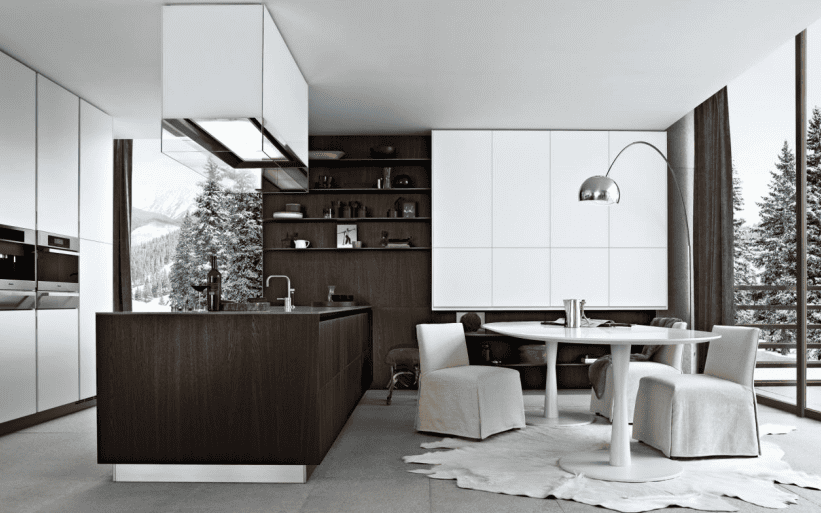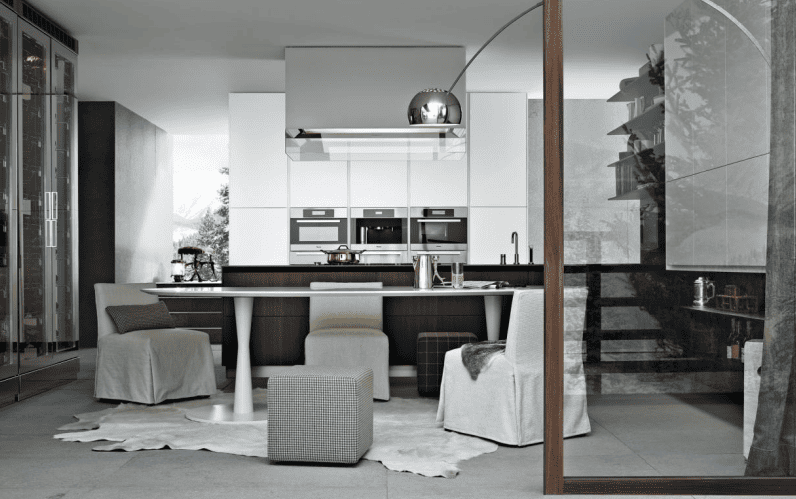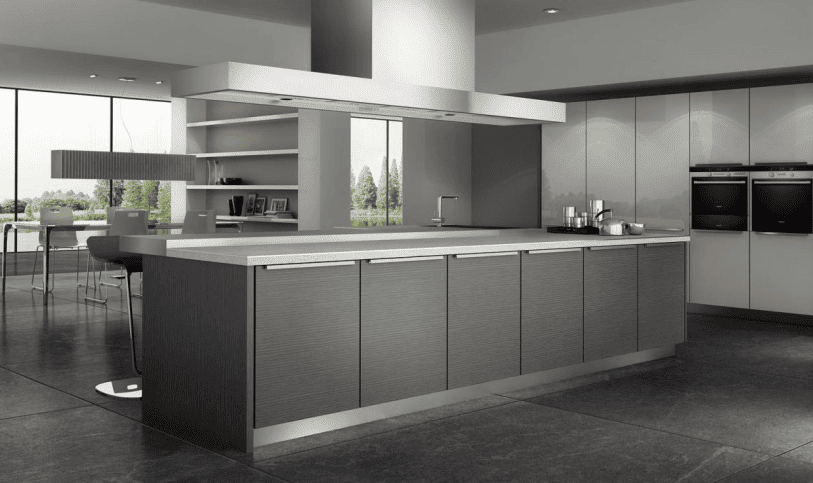When it comes to designing or renovating your kitchen, choosing the right material for your cabinets is essential. Among the most popular choices are veneer and laminate, two finishes that can significantly affect the aesthetics, durability, and cost of your kitchen. But which one is the better option for your kitchen cabinets? Let’s break down the differences between veneer and laminate, helping you make an informed decision based on your needs and preferences.
Veneer is a thin layer of real wood that is applied to a base material like MDF or plywood. It offers the look and feel of solid wood but at a much lower cost. Since veneer is made from natural wood, each piece is unique, with distinct grain patterns that give your cabinets a more luxurious, authentic look. However, because it’s a natural material, veneer requires more care and maintenance to keep its appearance in top condition.

laminate is a synthetic material that is created by pressing layers of paper and plastic resins together. This process allows for a wide variety of colors, patterns, and textures, often mimicking the look of wood, stone, or even metal. Laminates are typically more affordable than veneers, making them a popular choice for homeowners who want the look of wood but are working within a tighter budget.
One of the most important considerations when choosing between veneer and laminate is durability. Laminate is known for being highly durable, scratch-resistant, and moisture-resistant. It’s a great option for high-traffic areas like the kitchen, where surfaces are exposed to spills, stains, and heat. The hard, smooth surface of laminate is easy to clean and maintain, making it an ideal choice for busy households.
In contrast, veneer, while beautiful and authentic, is more vulnerable to damage. It can scratch or chip over time, especially if it’s not properly maintained. Veneer requires periodic polishing and care to maintain its look. If your kitchen experiences heavy use, laminate might be the more practical choice for durability and ease of maintenance.
When it comes to aesthetics, veneer has a distinct advantage. Since it is made from real wood, each veneer has a unique pattern, color, and texture, which adds a natural elegance to your kitchen. The beauty of wood veneer is hard to replicate, making it a top choice for homeowners who prefer a more traditional or rustic look.

Laminate, on the other hand, offers a wide range of design options, including the ability to mimic the look of wood. However, because it is mass-produced, the design can appear less unique than veneer. Laminates can still look great, particularly in modern kitchens with sleek, minimalist designs. If you’re looking for a more uniform and contemporary aesthetic, laminate could be the better option.
In terms of cost, laminate is generally more affordable than veneer. Since laminate is a synthetic material and easier to produce, it tends to be the budget-friendly option. For homeowners on a tight budget or those looking to renovate their kitchen without breaking the bank, laminate offers a cost-effective solution that doesn’t compromise on style.
Veneer, being made from real wood, comes at a higher price point. The cost of veneer can vary based on the type of wood used and the quality of the material. For those seeking a luxurious, high-end look and willing to invest more, veneer can provide the authentic, natural beauty of wood without the expense of solid wood.
Heat and moisture resistance are crucial factors in a kitchen environment. Laminate excels in this area, as it is highly resistant to both heat and moisture. Whether you’re cooking or cleaning, laminate cabinets can withstand the typical kitchen conditions without warping or discoloring.
Veneer, on the other hand, can be more susceptible to damage from heat and moisture. Exposure to high temperatures or water can cause the adhesive used to bond the veneer to loosen or the wood to warp. If you have a kitchen that sees a lot of steam, cooking spills, or direct heat, laminate may be the safer choice.
For eco-conscious homeowners, the sustainability of the materials you choose for your kitchen cabinets matters. Veneer is considered more environmentally friendly than laminate because it is made from a thin layer of real wood, which is a renewable resource. Some veneers are even certified by sustainability organizations, ensuring that the wood is sourced responsibly.

Laminate, while made from synthetic materials, can also be produced using recycled paper, which may reduce its environmental impact. However, the manufacturing process involves resins and adhesives that may not be as eco-friendly. If sustainability is a top priority for you, you may want to choose veneer, but keep in mind that laminate can be made more eco-friendly depending on the brand and production process.
Choosing between veneer and laminate depends largely on your needs, preferences, and budget. If you prioritize durability, low maintenance, and a more affordable price, laminate is the clear winner. However, if you’re looking for a more natural, unique look and are willing to invest in care and maintenance, veneer might be the better option. Ultimately, both materials can be used to create beautiful, functional kitchen cabinets, so the decision comes down to what matters most to you.
If you're looking to add a touch of elegance and functionality to your kitchen with high-quality materials, BFP offers a wide range of options tailored to your needs. With years of experience in providing custom solutions, BFP is here to help you make your kitchen a space you’ll love. Contact us today to explore our extensive selection of veneer and laminate finishes!
We employ cookies to analyze website traffic and enhance your browsing experience. Data securely aggregated, privacy protected. See Privacy Policy for details.